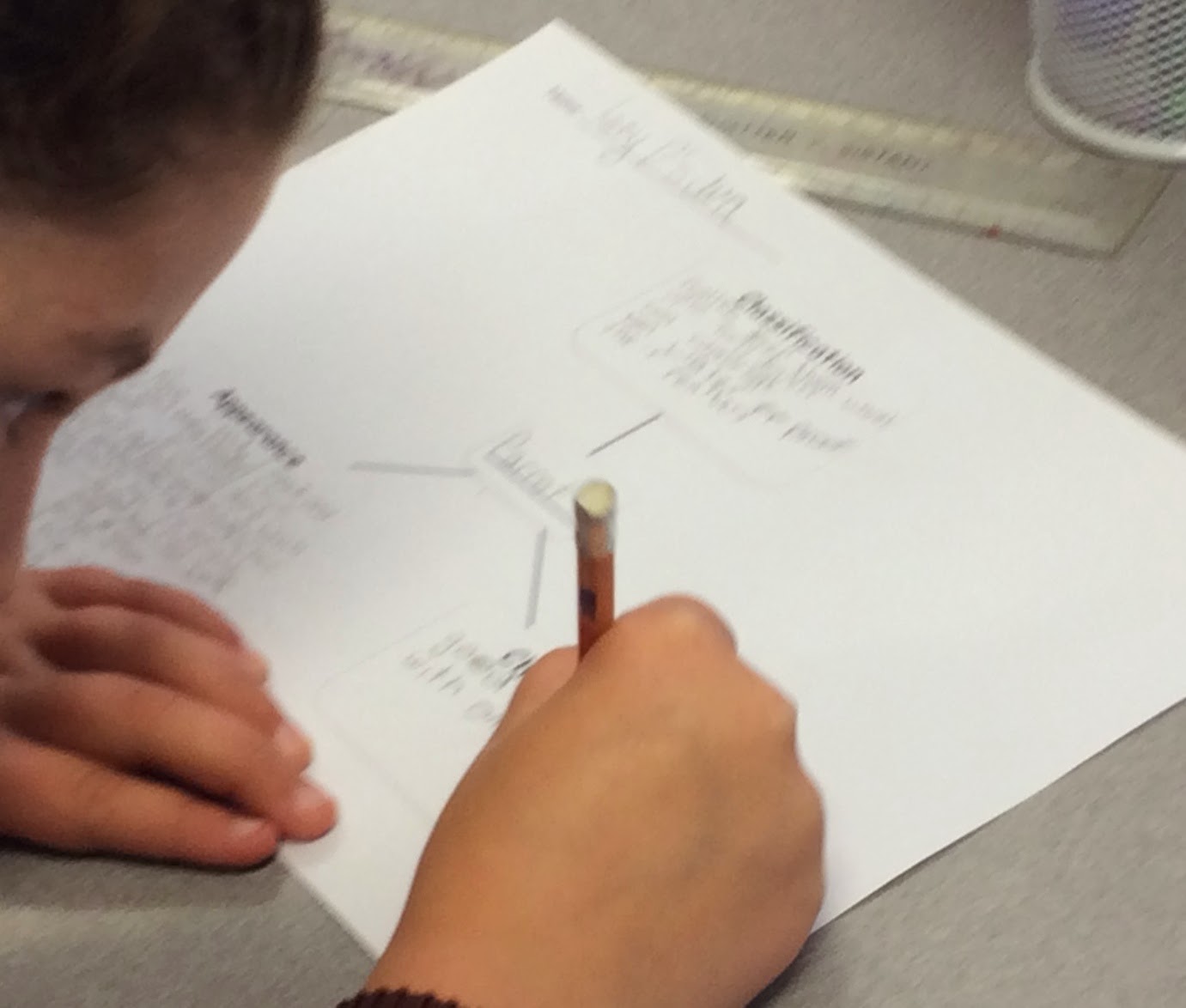Imaginative Texts
According to the new New South Wales Syllabus by the end of Stage 2 it is expected that the children will "create well-structured imaginative, informative and persuasive texts in terms of topic, purpose, audience and language by drafting, proofreading and editing for familiar and unfamiliar audiences. They use simple and complex sentences, paragraphing, punctuation and grammatical features characteristic of the various texts to support meaning"Through out our writing time the children in Year 3 engage in a variety of experiences that help develop their writing skills.
One such experience of high teacher support is modelled writing.
What is Modelled Writing?
During modelled writing the teacher explicitly models particular aspects of writing, thinking aloud as they model how an expert writer composes, revises, edits and/or proofreads their texts. Last week the Year Three teachers modelled how to organise ideas into a concept map. After the modelled experiences the children were split into three groups and engaged in activities that allowed children to either independently organise their own mind map, construct a mind map with teacher's support or work with peers to organise a mind map based on an Australian animal.Throughout the week the children have been given the opportunity to reflect on our writing experiences. Their insights are found below.
Descriptions
Year Three have been focusing on descriptions. We have been writing, reading and talking about descriptions. After recess everyday our teachers do a 'Read-A-Loud' with us. This term we are reading Harry Potter, and it is full of descriptions. We love Harry Potter. It is the best book, although we have only read a few chapters. Mrs Standring read a great description of Dumbledore - "he is tall, thin and very old judging by the silver of his hair and beard, which were both long enough to tuck in his belt. he was wearing long robes with a purple cloak that swept the ground ..."She turned this into an art activities and helped us use our imagination and art skills and draw Dumbledore.
Last week the teachers showed us how we can use a mind map when planning out work. We have all chosen an Australian animal to research and write a description about. As a class we are writing one on a bilby. The teacher's will be writing a description on the bilby while we chose one of the following animals, emu, cassowary, dingo, wombat, koala, echidna, salt water crocodile, platypus or parrot.
Mind Maps are a good way to organise your ideas. Next week we will be using our mind maps to write sentences and paragraphs.
Challenge
Create a mind map on your favourite animal. Your headings could include: Classification (Is it a mammal, marsupial, reptile, monotreme, shark) Description (face, body, limbs) characteristics (nocturnal, omnivore, carnivore, hunter, scavenger) Send them in and we will hang them in our space so others can see how to use mind maps.Our drawings of Dumbledore
Mind Maps help us organise our thoughts . We can use these to write descriptions.







No comments:
Post a Comment